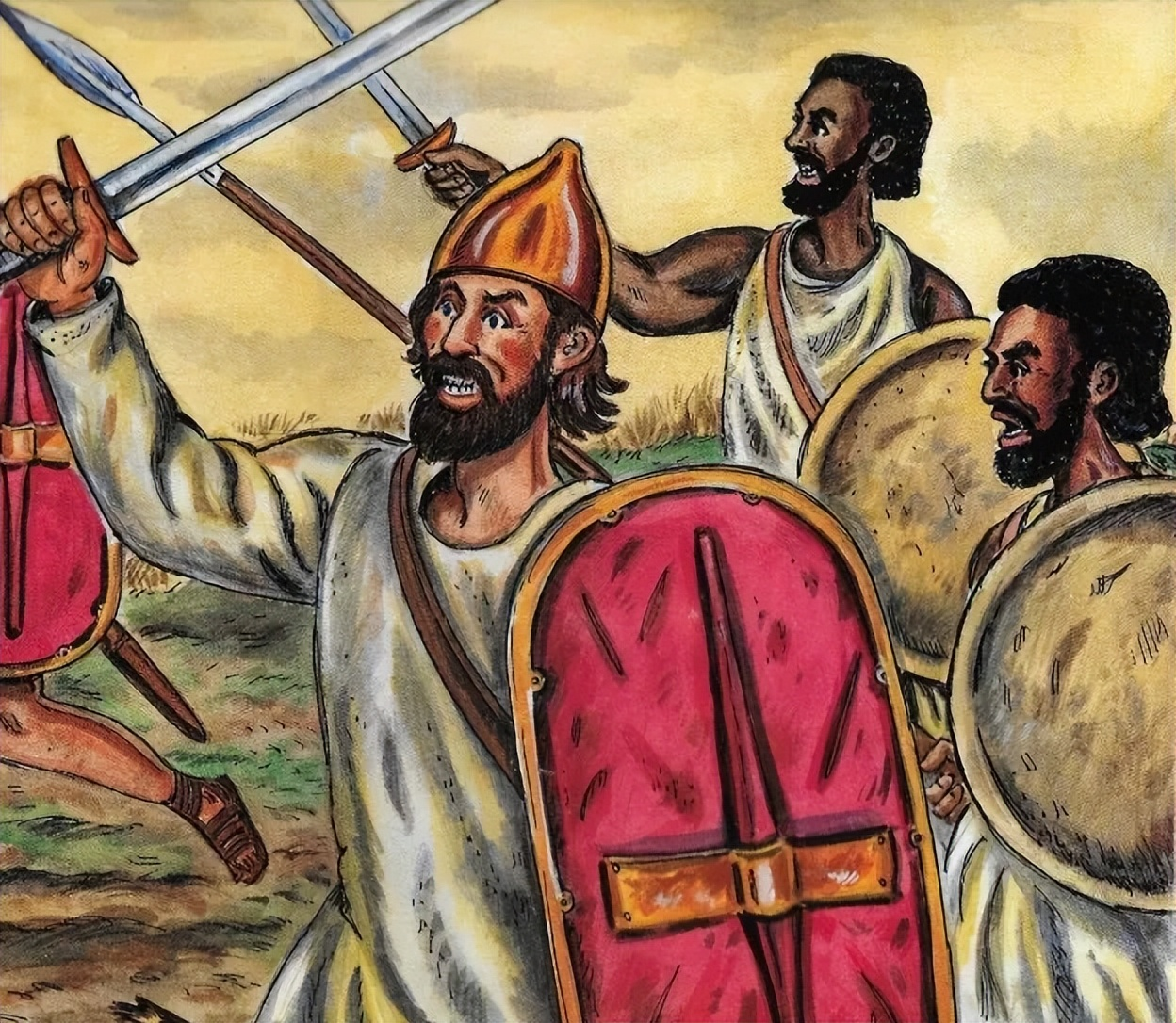The year was 203 BC, and the Second Punic War was entering its most critical phase. While the port city of Utica still held out against the advancing forces, the Carthaginian army was on the verge of collapse. Many of their allies, including the Numidians, had already withdrawn under the leadership of King Syphax, retreating to their homeland to regroup. But victory for the Romans seemed inevitable, and they weren’t about to let Syphax slip away easily. A relentless pursuit was about to unfold.

The Roman forces, led by the skilled Lelius, with the help of light infantry and cavalry, followed Syphax into Numidia, pressing hard until they reached the capital city of Cirta. Although the Romans had the upper hand, they knew they would need time to rest and reorganize before they could finish what they started.
Meanwhile, King Syphax, though cornered and nearly defeated, saw a glimmer of hope. His enemy was weary, and he seized the moment to summon fresh recruits from his homeland. But Syphax had a different idea this time. He decided to shake things up by reorganizing his forces in the Roman way—just like the Roman legions. This was a bold decision, considering that the traditional Numidian cavalry was not only highly skilled in mounted warfare but also excelled in archery and javelin tactics. To make this new army, Syphax relied on enslaved men, often inexperienced in battle.
While this “makeshift” army of freshly trained soldiers seemed promising, it was no match for the seasoned Roman-Italian cavalry and their light infantry. Syphax’s forces were numerous, but they were ill-equipped and lacked the well-crafted armor that the Romans were known for. However, they had numbers on their side, and this would prove to be an important factor in the coming conflict.
The inevitable showdown between Syphax’s new army and Massinissa’s forces—a former ally of Carthage and now a Roman sympathizer—was about to take place. Syphax’s 16,000 to 20,000 troops faced off against Massinissa’s considerably smaller force of 2,000 Numidian cavalry, bolstered by Roman-Italian allies. Syphax, eager to finish the fight once and for all, deployed his troops with heavy cavalry at the front and light infantry behind. Massinissa, no stranger to Roman tactics, responded by placing his cavalry at the front, with his Roman allies supporting the rear.
The battle began with both sides sending their cavalry to engage in a series of javelin exchanges before retreating, a traditional Numidian tactic that favored quick strikes and hit-and-run methods. Despite the numerical disadvantage, Massinissa’s forces were better equipped and more organized, thanks to their Roman allies. Syphax’s cavalry, though larger, lacked the quality of armor and weaponry that Massinissa’s troops had, and they quickly found themselves at a disadvantage.
As the battle raged on, Massinissa’s cavalry began to withdraw, allowing the Roman-Italian cavalry to move in and take the lead. The larger forces of Syphax soon found themselves in disarray, with the Roman-Italian cavalry and infantry slowly breaking their lines. But Syphax, unwilling to surrender, led a final charge into the enemy’s ranks, attempting to break through. Unfortunately for him, Massinissa was prepared and quickly intercepted, resulting in Syphax’s capture after his horse was killed in the chaos.
The loss was catastrophic for Syphax. His forces crumbled, and the Romans captured around 5,000 of his men while inflicting minimal losses on themselves—just 375 casualties. The fall of Syphax marked the end of Numidia’s resistance against Rome. The city of Cirta quickly surrendered, and the rest of Numidia followed suit, switching allegiances from Carthage to Rome.
The consequences of the Numidian defection were devastating for Carthage. The news of Syphax’s defeat spread like wildfire, and it struck terror into the hearts of the Carthaginian leadership. In a last-ditch effort to salvage the situation, they sent a delegation of 30 elders to plead for peace with Scipio, hoping to buy time to regroup and call for reinforcements from Italy.
However, it was too late. Hannibal, the great Carthaginian general, had to abandon his position in Italy and rush back to North Africa to lead the defense. Despite his legendary unbeaten record, he was about to face the inevitable—his defeat at the Battle of Zama would mark the end of the Second Punic War and the rise of Rome as the dominant power in the Mediterranean.
The Aftermath and Cultural Legacy
The Battle of Cirta is a reminder of the shifting allegiances and fragile nature of power during times of war. It also illustrates how quickly a battle could turn the tide in favor of one side or another. For the Romans, this victory cemented their control over North Africa and secured Massinissa’s loyalty, which would prove crucial in the years to come.
For modern readers, the events at Cirta highlight the importance of strategy, adaptability, and timing in warfare—lessons that still resonate in military theory today. The Roman legions’ ability to adapt, their reliance on well-coordinated infantry and cavalry, and the critical importance of maintaining morale all play a role in shaping modern military tactics.


No comments yet.